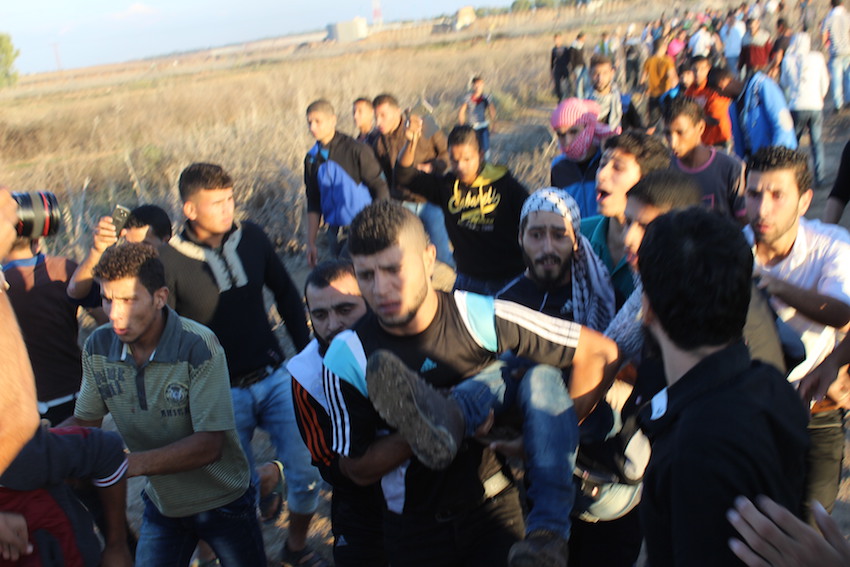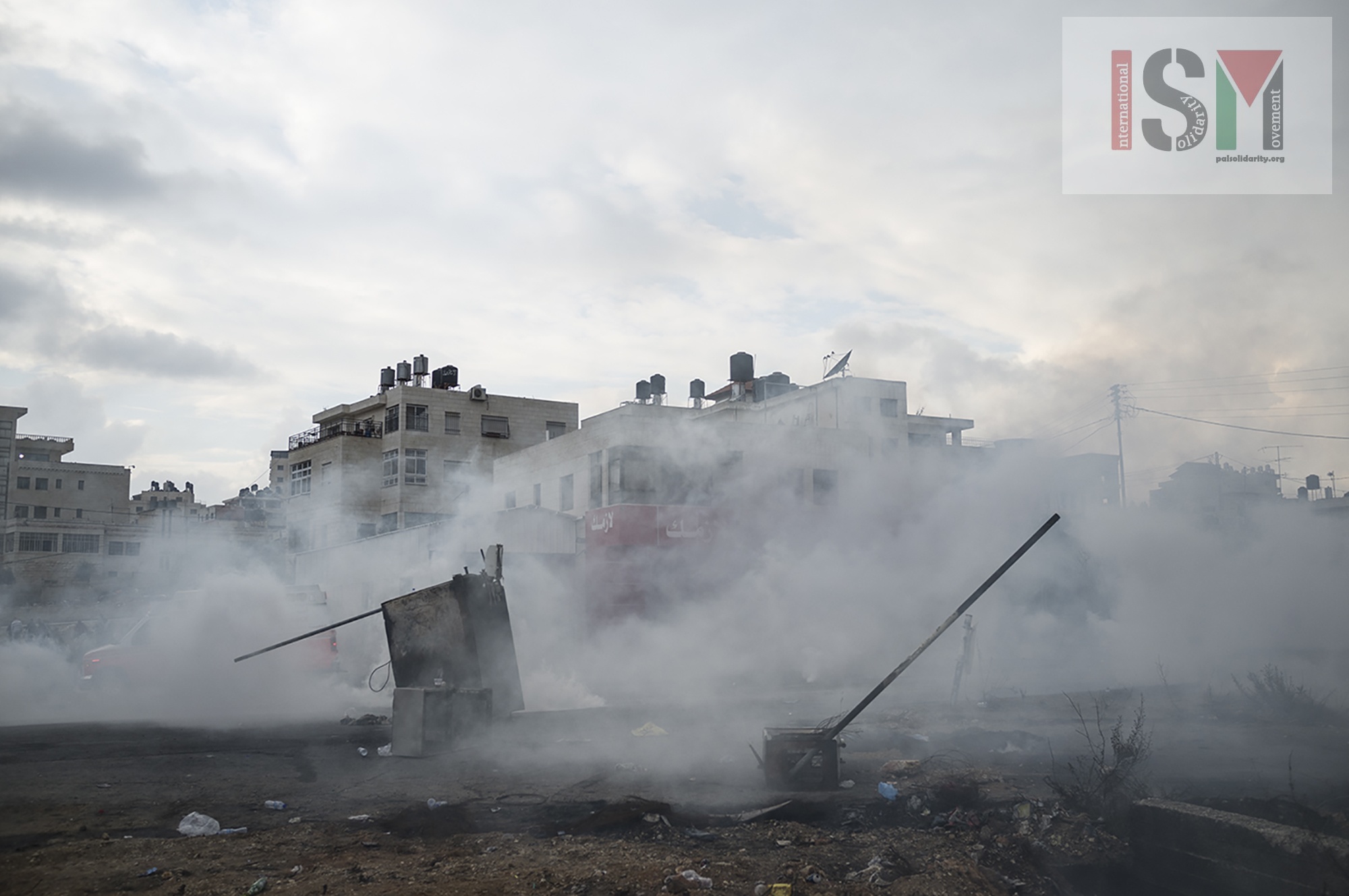Category: Features
-
Images from Gaza: Another brutal Friday
31st October 2015 | International Solidarity Movement, Gaza team | Gaza Strip, occupied Palestine Images from clashes yesterday, October 30th in Nahel Oz (Shijaia), Occupied Gaza Strip. All photos credited to ISM, Gaza. By the end of clashes yesterday, Minister of Health Dr. Qadra announced 46 people had been injured, including paramedics. Israeli forces met…
-
Demonstration in Beit El violently attacked by Israeli forces
31st October 2015 | International Solidarity Movement, Nablus team | Ramallah, Occupied Palestine The recent escalation of force used in the occupied Palestinian Territories was clear yesterday, Friday 30th October, when clashes broke out at Beit El near Ramallah. The demonstration was met with extreme violence by the Israeli occupation forces, leaving 15 people injured…
-
Video: Israeli forces executing wounded youth in Occupied Hebron
30th October 2015 | International Solidarity Movement | al-Khalil, occupied Palestine On October 29th Mahdi Mohtaseb was executed by Israeli forces at the Salaymeh (160) checkpoint, near the Ibrahimi Mosque in the old city of al-Khalil (Hebron). The 23-year-old from Jabal Johar, who was employed in a local sweets shop, was supposed to meet his…



